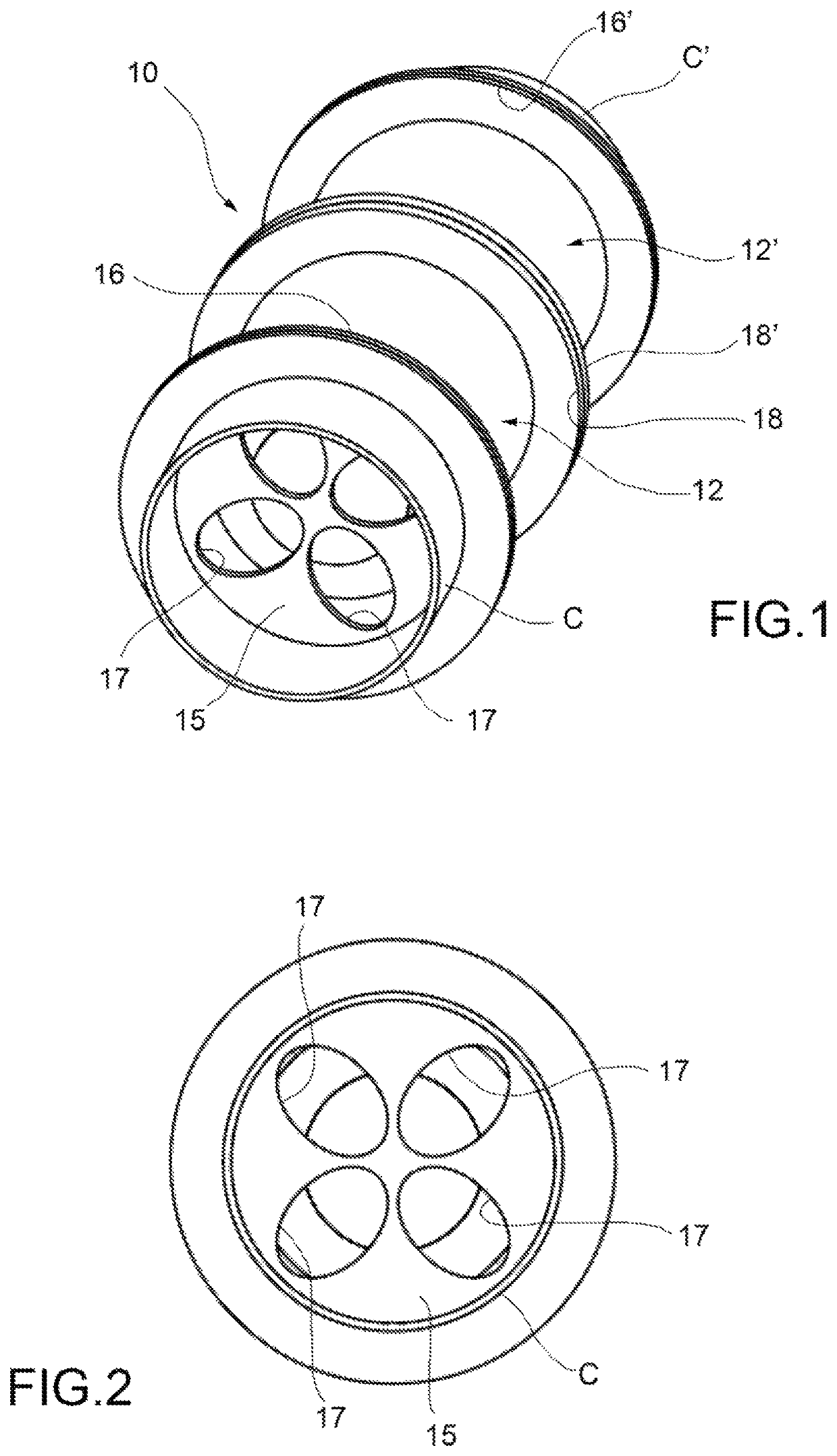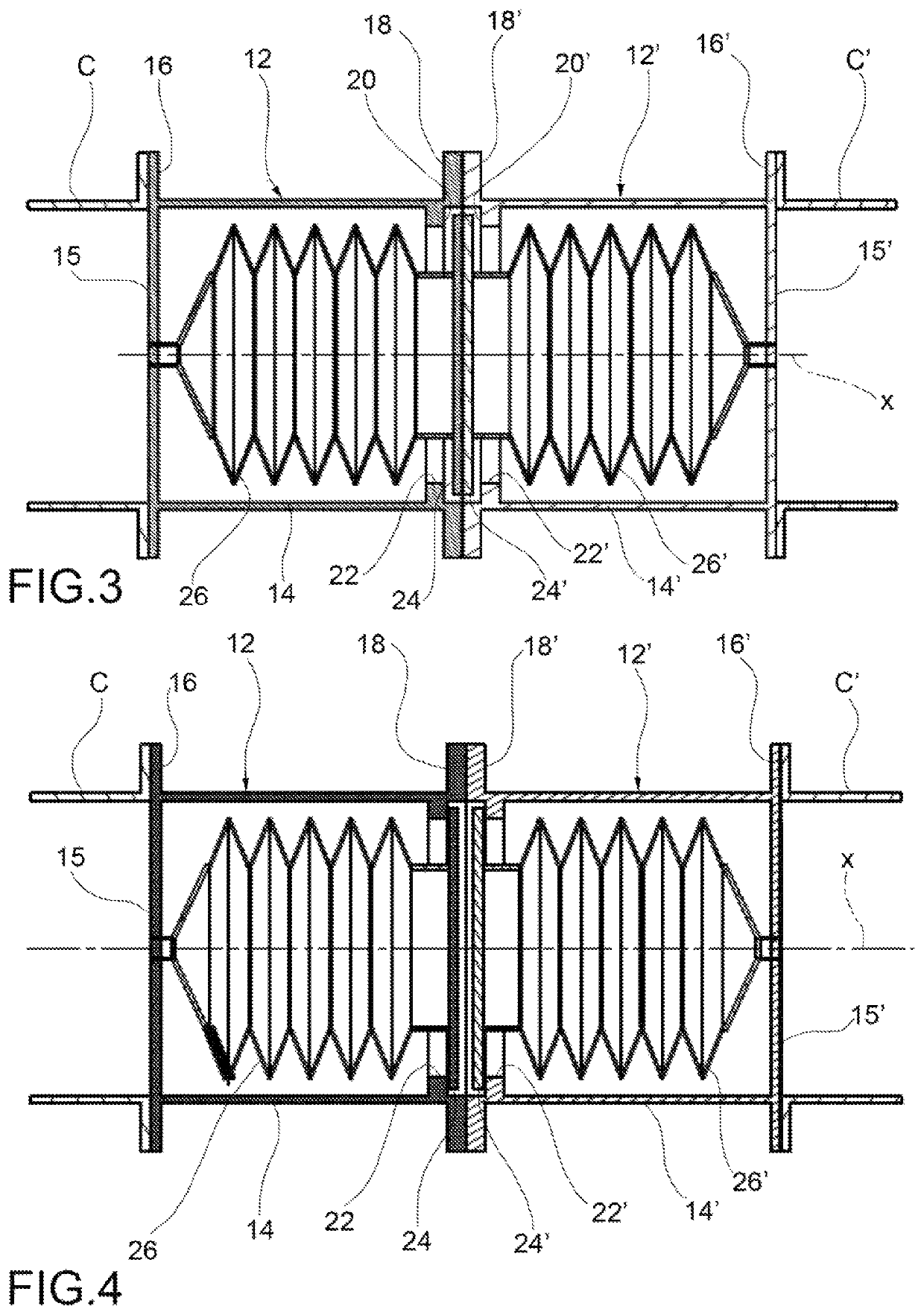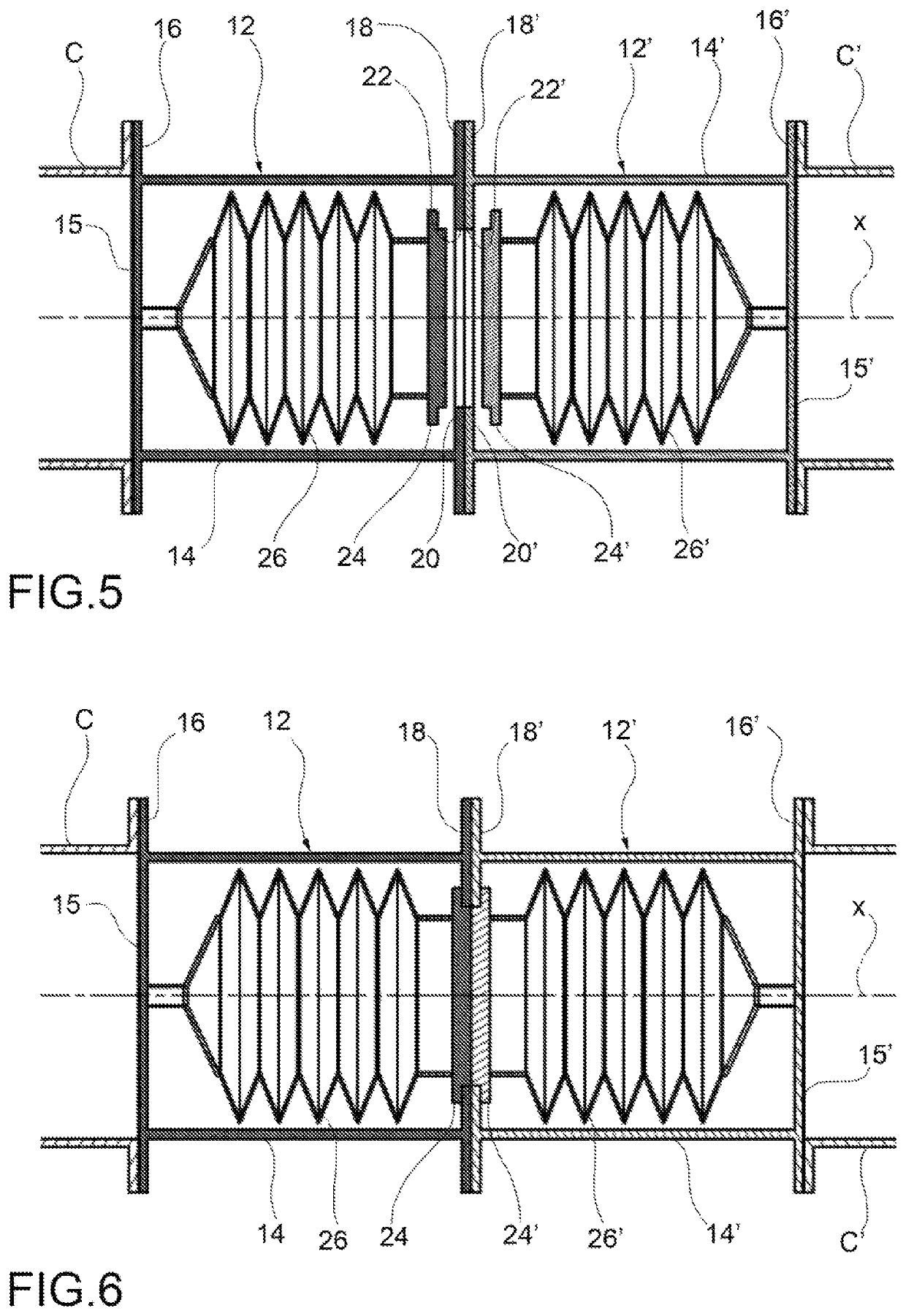Connection device for fluid circuits
a fluid circuit and connection device technology, applied in the direction of couplings, process and machine control, instruments, etc., can solve the problems of loss of working fluid contained, heavy and bulky known connection devices, and structurally complex and therefore particularly expensive, and achieve the effect of less heavy, less bulky, and less expensiv
- Summary
- Abstract
- Description
- Claims
- Application Information
AI Technical Summary
Benefits of technology
Problems solved by technology
Method used
Image
Examples
Embodiment Construction
[0017]With reference first to FIGS. 1 to 4, a connection device (hereinafter simply referred to as “device”) for fluid circuits according to a first embodiment of the present invention is generally indicated 10. The device 10 is intended to hydraulically connect two adjacent circuit sections, indicated C and C′, respectively, and is configured to allow disconnection of the two circuit sections C and C′ without causing fluid losses from the circuit, even when at least one of the two circuit sections contains fluid under pressure.
[0018]The device 10 comprises a pair of thermal expansion valves, indicated 12 and 12′, respectively. The valve 12 is mounted, for example by means of screws (not shown), to an end of the first circuit section C, while the valve 12′ is mounted, for example by means of screws (not shown), to an end of the second circuit section C′. The two valves 12 and 12′ are releasably connected directly to each other, for example by means of screws (not shown). Each of the...
PUM
 Login to View More
Login to View More Abstract
Description
Claims
Application Information
 Login to View More
Login to View More - R&D
- Intellectual Property
- Life Sciences
- Materials
- Tech Scout
- Unparalleled Data Quality
- Higher Quality Content
- 60% Fewer Hallucinations
Browse by: Latest US Patents, China's latest patents, Technical Efficacy Thesaurus, Application Domain, Technology Topic, Popular Technical Reports.
© 2025 PatSnap. All rights reserved.Legal|Privacy policy|Modern Slavery Act Transparency Statement|Sitemap|About US| Contact US: help@patsnap.com



